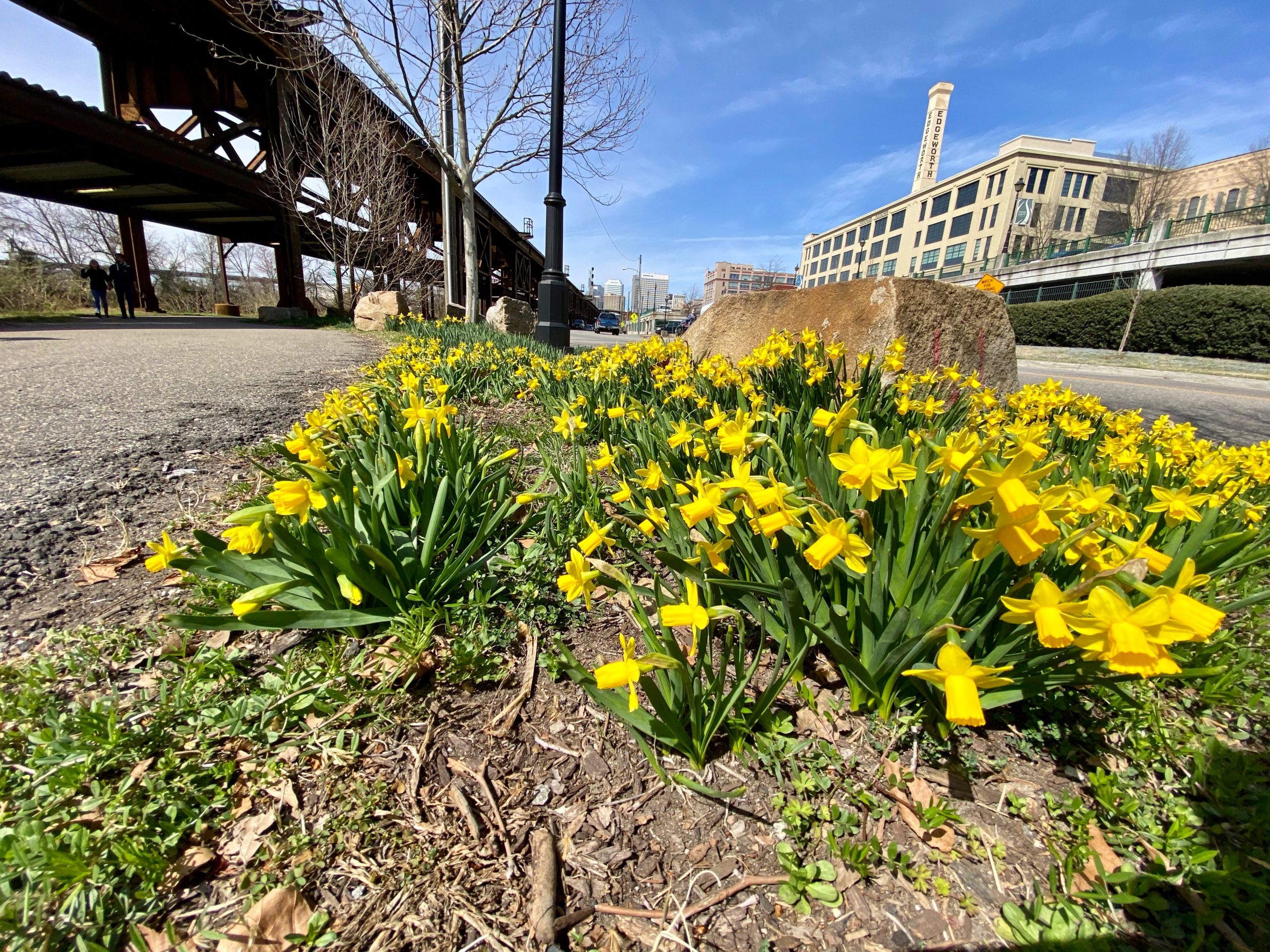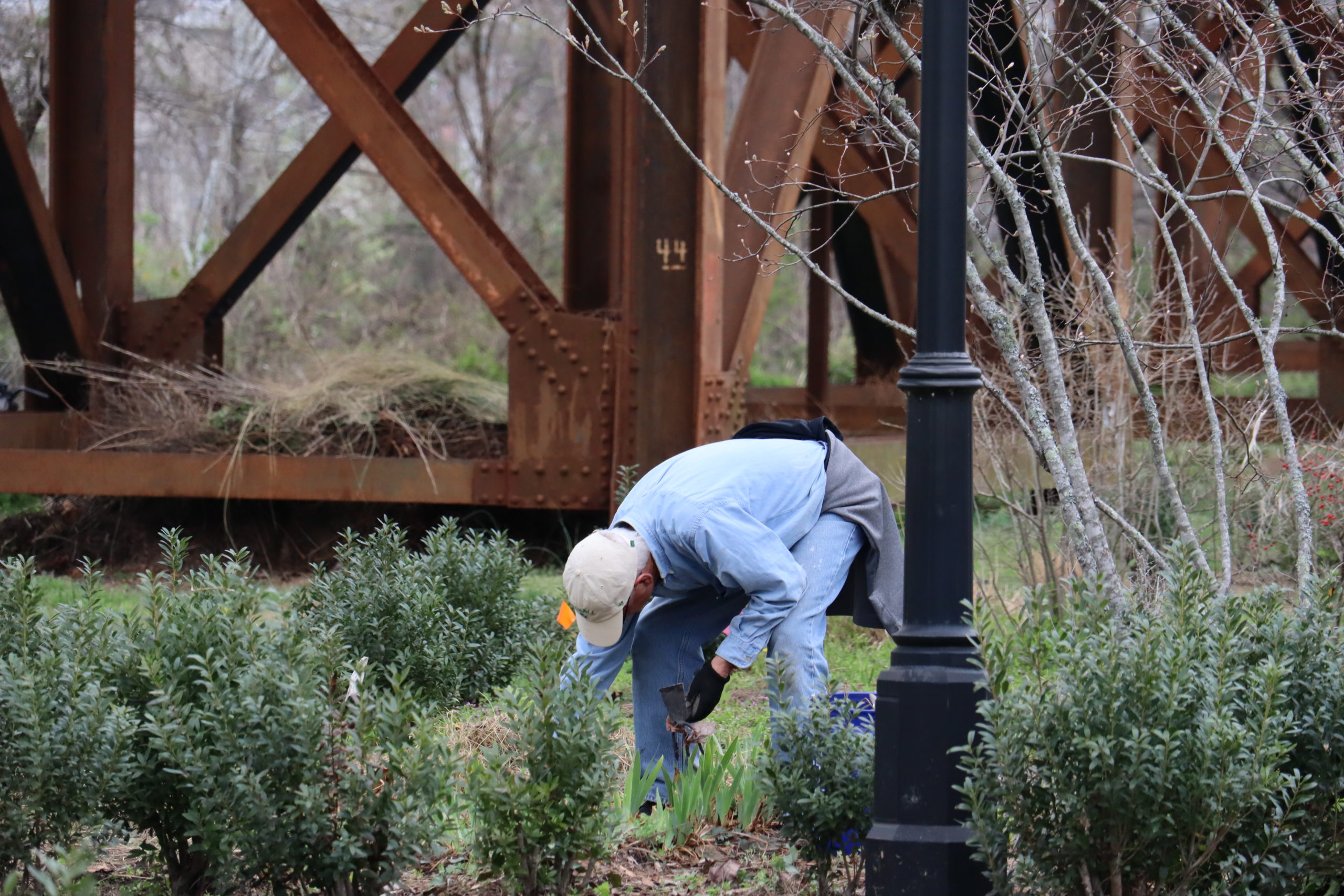Written by: Mary Petres
Hello fellow garden lovers! During the cold dreary days of winter, it seems impossible that the lively days of spring are only weeks away. For the most part, the garden and its inhabitants (both flora and fauna) wait calmly in a place of dormancy. However, unbeknownst to many of us, winter weeds are happily growing amongst our dormant friends. I use the term “weed” loosely. Traditionally associated with unattractiveness, many plants commonly referred to as weeds can not only be beautiful, but also provide benefits to our fauna and can even be edible. When I refer to weeds, I mean a species that is not appropriate for the space in which they grow. In many of our gardens these plants can outcompete the intentional plantings if left to their own devices, ultimately altering plant bed diversity in a negative way.

Photograph of weeds at the Low Line by Kelly Mansfield
Winter and spring annual weeds are by far the most prevalent at the Low Line. Not to say we don’t tackle unwanted plants all year long, but the shoulder seasons are by far the most prolific. Plants like hairy bittercress (Cardamine Lisulta) can produce an average of 5,000 seeds per plant, while chickweed (Stellaria media) can create a whopping 25,000 seeds per plant! I have witnessed a plant less than 1” in diameter producing flowers, so maturation size can vary greatly even within a single species. Other strong competitors include Lamiums, like henbit and deadnettle, and annual bluegrass (Poa annua). Winter weeds produce an incredibly high number of seeds when many of our native plants are sitting dormant. This creates a perfect opportunity for the unwanted species to put in a whole season of growing before our desired plants have even had a chance to bloom.
Whole plant removal prior to flowering is our go-to method for controlling these uninvited guests. The goal is to reduce the seed bank present in the soil. Targeting plants prior to flowering can accomplish two objectives: (1) weeds unable to flower cannot go to seed, thus reducing the seed bank over time; (2) seeds from previous seasons will be buried too deeply to germinate. This is a time consuming process but staying on top of the weeds is well worth the diverse and thriving garden space.
A side note on seeds already in the soil from years past. Striving for minimal soil disturbance also controls plant growth. If the seeds are too far from the surface they will not germinate. Case in point, this fall we did a large transplanting to a fairly open area. As a part of the transplanting the soil was disturbed. Within six weeks we noticed weed production on overdrive as seeds initially too far down in the soil to germinate were suddenly exposed to light. What could have slowed down this growth would have been a 3” layer of mulch.

If time does not allow for plant removal, the next best technique is to trim the plants to keep them from flowering – keep in mind, some plants can root from cuttings, be mindful of what species you are dealing with before bringing out the mower (or “weed whacker”) or you may end up with a bigger problem than when you started! If your target plants have already flowered, remove the flowers before they go to seed. Take special care when disposing of the plants. Some will continue to produce seed even after removal from the ground, and other plants can reroot if left touching soil.
Pictured below are some of the most common winter annuals we encounter along the Low Line.

Our dedicated corps of volunteers help us keep the gardens as weed free as possible utilizing sustainable gardening techniques like hand pulling. This method is time consuming, but with several sets of hands in the ground each week, we’re able to stay on top of weeds in our greenspaces. If you have time to spare, or would like to learn more about sustainable weed management to take home to your own garden, we would love to have you join us as a maintenance volunteer — we meet each Wednesday morning. For more information on how to volunteer, email [email protected]. If you are interested in learning more about other garden weeds you might find in the late summer/early fall check out our other blog post [here].
REFERENCES:
https://www.bbg.org/news/weed_of_the_month_hairy_bittercress
https://extension.psu.edu/lawn-and-turfgrass-weeds-hairy-bittercress
https://hgic.clemson.edu/weed-of-the-month-henbit/
https://hgic.clemson.edu/common-chick-weed-stellaria-media/


